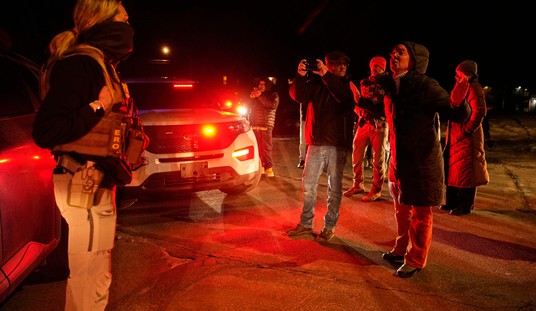The 2015 publication of a gain-of-function study that details the creation of a chimeric virus certainly raises questions that need answers. However, the researchers made a stunning omission that becomes all the more alarming considering the goal of gain-of-function research.
Back in 2012, Dr. Anthony Fauci pushed for gain-of-function research, claiming it was worth the risk. These comments are part of a legitimate debate within the scientific community. The theory yet to be realized is that researchers can create close approximations of viruses that may emerge from nature through gain-of-function research. Then treatments can be developed, targeting likely genetic or protein targets on the chimeric virus.
Researchers can then compare a virus’s genetic code to previous viruses that emerged naturally and chimeric viruses created through gain-of-function research, should a new pathogenic one emerge from nature. Researchers hope to find common genetic or protein targets in a virus that can be cured by a therapeutic or a vaccine that can be developed before any outbreak. This argument about being proactive is compelling, but bad actors can use the research for nefarious purposes, including the development of bioweapons. Without stringent and globally agreed-upon limitations and reporting requirements with the force of international law, one might as quickly conclude that the risks outweigh the benefits.
Recommended: BOMBSHELL: Fauci Pushed for ‘Gain-of-Function’ Research in 2012, Said It Was Worth the Risk of Pandemic
There must be a repository for the relevant information on documented viruses to compare with a newly-discovered one. This tool is a system of cooperative databases that update each other from around the world. The U.S. version is called GenBank. The problem with the 2015 chimeric virus is that, according to an author correction on the 2015 study, published on May 22, 2020, researchers never uploaded the virus information to GenBank:
In the version of this article initially published, the sequence of the mouse adapted SHC015-MA15 virus had not been deposited in GenBank. The sequence has now been deposited in GenBank under accession number MT308984.
If the team made the correction close to the note’s date, that is approximately five years after they created the virus in 2014. This correction seems even more notable when I consider the timeline of when I first came across it. In early April 2020, Joshua Philipp of The Epoch Times did an hour-long documentary on the origins of COVID-19. After watching it, I read the 2015 study myself within a day or two of viewing it. As of March 30, 2020, the study already had an editor’s note:
30 March 2020 Editors’ note, March 2020: We are aware that this article is being used as the basis for unverified theories that the novel coronavirus causing COVID-19 was engineered. There is no evidence that this is true; scientists believe that an animal is the most likely source of the coronavirus.
We now know from Dr. Fauci’s emails that there was not as much confidence in the halls of the NIH earlier in the outbreak. It is also apparent that some researchers were telling Fauci they feared it was an engineered virus. When a Freedom of Information Act (FOIA) request brought the emails to light, authorities redacted most of the details in an email about a high-powered conference call where participants possibly discussed the 2015 study. The editor’s note on the study appeared after these communications. It is also not apparent whether or not researchers had uploaded information about the virus created in the study to GenBank for any comparison between it and COVID-19 at the time.
However, articles came out in a flurry denouncing the lab-leak theory. Nicholas Wade, a former science reporter for The New York Times, pointed out how conflicted and baseless the most influential articles were. One in Lancet listed Peter Daszak from Eco-Alliance as an author. He funded research at the Wuhan Institute, including the 2015 study, yet declared no competing interests. Wade asserts that the article was also more opinion than scientific fact.
Another influential letter included Kristian G. Andersen of the Scripps Research Institute, who had been on copy in some of Dr. Fauci’s e-mails that referenced the study. The letter asserted that there was no evidence COVID-19 was engineered. Wade explained there was also no evidence that it was not:
Unfortunately this was another case of poor science, in the sense defined above. True, some older methods of cutting and pasting viral genomes retain tell-tale signs of manipulation. But newer methods, called “no-see-um” or “seamless” approaches, leave no defining marks. Nor do other methods for manipulating viruses such as serial passage, the repeated transfer of viruses from one culture of cells to another. If a virus has been manipulated, whether with a seamless method or by serial passage, there is no way of knowing that this is the case. Dr. Andersen and his colleagues were assuring their readers of something they could not know.
After looking at the 2015 study again to confirm funding from the NIH and realizing that the authors assert that the agency permitted them to continue after the gain-of-function ban, I watched Philipp’s documentary again. With a new perspective, one of his findings is chilling.
Recommended: Fauci’s Claim That the NIH Never Funded Gain-of-Function Research at the Wuhan Lab Has Some Serious Holes
According to Philipp, after the successful cross-species transmission into mice, which caused significant lung damage in the 2015 study, Dr. Shi Zheng-Li moved to research the effects on primates. This move triggered debates within the scientific community. Simon Wain-Hobson, a virologist at the Pasteur Institute in Paris, pointed out that the researchers created a novel virus that “grows remarkably well” in human cells. “If the virus escaped, nobody could predict the trajectory,” he said.
Philipp contends that Shi’s research proceeded and, in November 2018, she spoke at the School of Life Sciences and Biotechnology at Shanghai Jiao Tong University. The topic was “Studies on Bat Coronavirus and Cross-Species Infection.” By the time Philipp was researching his documentary, the school had deleted reports about the event from the university’s website.
One person may know the content of her speech and precisely how her research following the 2015 study progressed, Eco-Alliance President Peter Daszak. He certainly had an interest in deflecting from the lab-leak theory and even thanked Dr. Fauci for doing so, according to the email release. Daszak was also the conduit for funding from the NIH to the Wuhan Institute following the ban on gain-of-function research.
All of this taken together paints a very troubling picture. It is not clear that anyone involved puts ethics and transparency over the urge to protect their professional reputation. It would require a leap of faith to think that the GenBank data for the 2015 chimeric virus is accurate, given the study was the subject of scrutiny at the time researchers appeared to add it. An even more significant jump would be required to believe that subsequent modifications or new chimeric viruses do not exist that were not entered in the system. Add a bombshell report that members of the U.S. State Department tried to block an investigation of the origins of COVID-19 because it “could open a can of worms.”
Recommended: BOMBSHELL: U.S. State Department Tried to Block Investigation of Lab Leak at Wuhan
None of it bodes well for determining the origins of COVID-19 or for America being prepared for the next threat we may face.
WATCH the full April 2020 documentary from Joshua Philipp. Not all of the content could be independently verified, though some of it is now in the public domain.










Join the conversation as a VIP Member